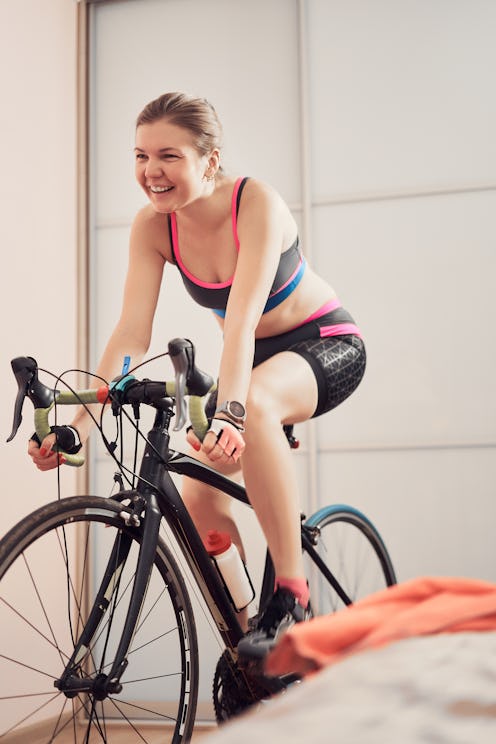Shutterstock
Whether you pedal indoors or out, cycling is always going to work your legs first and foremost, says Karen Maxwell, a senior master instructor at CycleBar. For a more well-rounded workout — and to feel more powerful on the bike — try a cross-training regimen for cycling strength.
kali9/E+/Getty Images
What Is Cross-Training?
Cross-training means adding different types of sports or exercises to your routine as a way to complement your main sport (read: cycling) and improve performance, Maxwell says. Switching things up also prevents injuries. Not to mention: It’s more fun.
Shutterstock
Try Dance Cardio
Since cycling keeps your body in one plane of motion, Maxwell suggests mixing things up with dance workouts. All the jumping and shimmying will help target more muscle groups, she says, and it’ll boost your heart rate to improve your endurance.
gilaxia/E+/Getty Images
Add HIIT
HIIT, or high-intensity interval training, is another ideal way to cross-train as a cyclist. Similar to dance, it often involves side-to-side movements and rotational exercises that can’t be achieved on a bike, Maxwell says. It’ll help pedaling feel more like a breeze.
Shutterstock
Swim Laps
Swimming laps will provide resistance training and build up your aerobic ability — without the risk of injury, adds certified personal trainer Matt Scarfo, CPT. It’s a unique endurance challenge for cyclists, he says, that can help you pedal for longer.
Aja Koska/E+/Getty Images
Add Strength Training
“As a cyclist, your main power generators are in your lower body,” Scarfo says. “That means your strength training should support those muscles.” For a more powerful pedal, do squats, deadlifts, and lunges to work your glutes, quads, calves, and hamstrings.
Shutterstock
Go For Balance
To pedal equally with both legs, Scarfo recommends doing iso-lateral leg exercises like split squats and single-leg presses. “These help ensure you deliver the same amount of power with each pedal stroke, keeping you more balanced on the bike,” he says.
Shutterstock
Don’t Forget Your Arms
A strong upper body will help improve your posture on the bike and correct muscle imbalances, Maxwell explains. Add in moves like bicep curls, tricep dips, and chest presses so your arms won’t feel neglected.
Shutterstock
Remember Your Core
A strong core also contributes to good posture on a bike, as well as more power behind each pedal. Maxwell suggests ab exercises like bicycle crunches, leg raises, and mountain climbers to target this area.
Shutterstock
Start A Stretch Routine
Cycling has a limited range of motion, which means it’s possible you’ll develop tightness and poor mobility, Scarfo says — especially if you cycle a lot. To prevent tight hips or a stiff back, add stretching and yoga to your routine.
Shutterstock
Take Breaks
It’s important to take breaks from any form of exercise, Maxwell says, including cycling. Adding a few rest days into your routine will help prevent overuse injuries, and it’ll ensure you feel more refreshed and recharged for your next ride.
